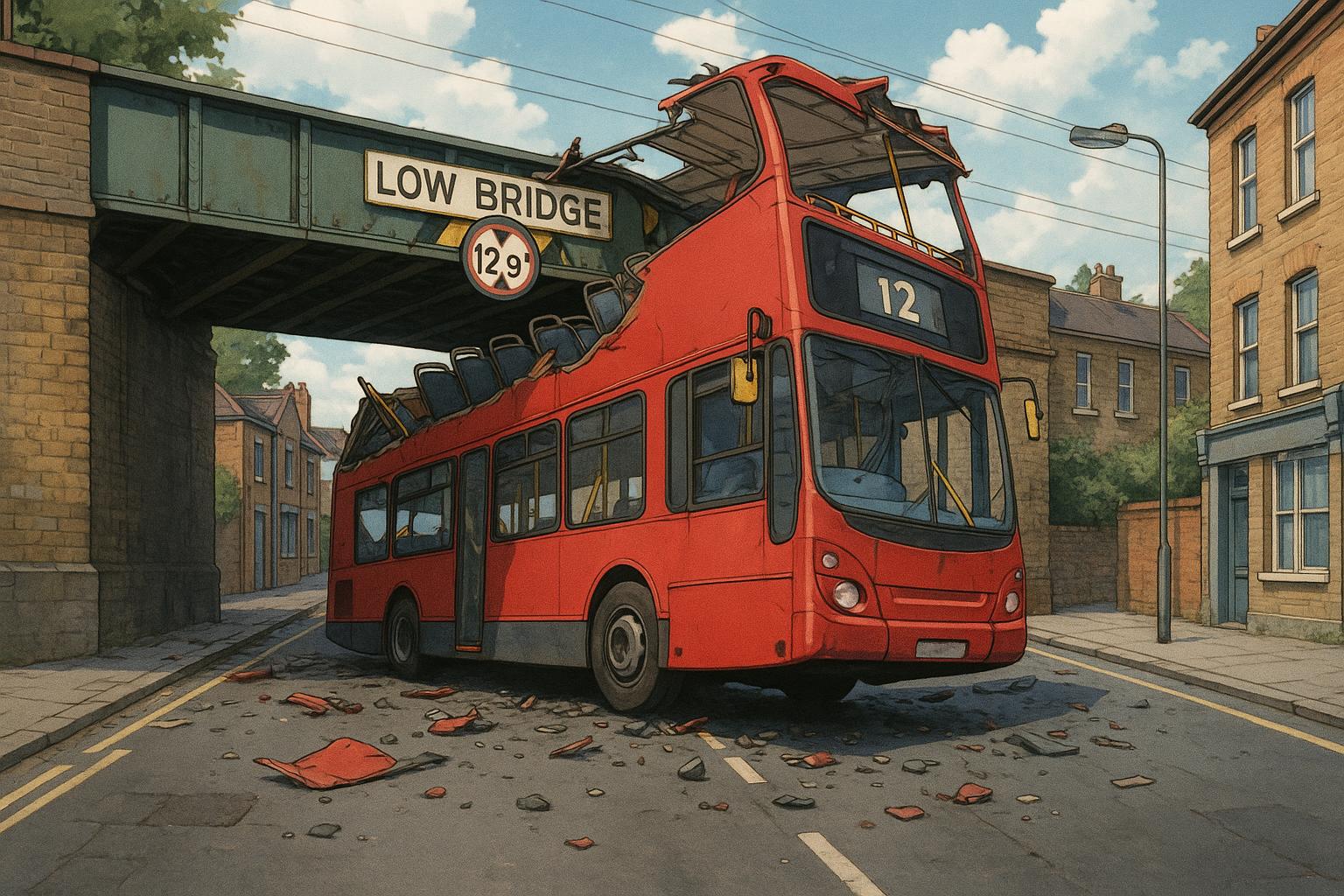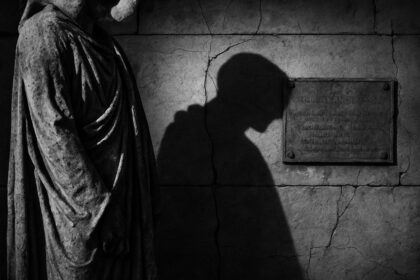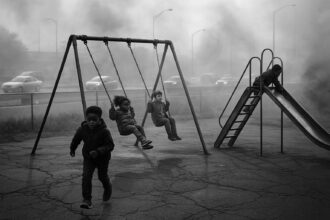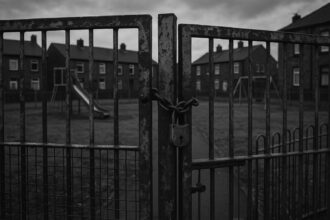A trainee double-decker bus suffers roof damage after colliding with Norwood Junction railway bridge, renewing concerns over vehicle clearance and route management in UK urban areas.
The roof of a trainee double-decker bus was violently torn away in a collision with a railway bridge in South London, marking a dangerous incident reminiscent of previous bridge strikes involving buses across the UK. The crash, which occurred shortly after midday at the Norwood Junction railway bridge, involved a training vehicle without passengers on board, but fortunately, no injuries have been reported at this stage.
Images from the scene illustrate the aftermath, with the bus’s roof suspended at an angle from the bridge, flanked by debris scattered across the road. A warning sign cautioning about the low bridge stands nearby, underscoring the inherent risks of such routes. Portland Road, the location of the incident, has a history of accidents involving vehicles misjudging their clearance, which is a persistent issue in urban areas.
The situation had immediate repercussions for local transport, causing the closure of Portland Road in both directions while National Rail confirmed that, although the line would eventually reopen, delays were expected. Passengers on London Overground, Southern, and Thameslink services were set to experience disruptions as a result of the crash.
Incidents of this nature have raised alarms in recent years, with previous collisions underlining the potential dangers posed by low bridges to larger vehicles. A notable case from 2015 involved a double-decker bus that struck the same bridge, resulting in seven minor injuries. In that incident, the bus did not typically travel under the bridge, highlighting the issue of route diversions leading to dangerous scenarios. Thankfully, emergency services reported that most passengers only sustained minor injuries.
Historically, double-decker buses have faced significant risks from low railway bridges, with similar accidents occurring nationwide. For instance, a double-decker bus in Bournemouth sustained similar damage after colliding with a railway bridge in 2016, leading to a public inquiry that revealed lapses in the bus operator’s route management. In another case, a bus carrying schoolchildren in Staines had its roof removed in 2015, prompting widespread reviews of driver training protocols.
Despite ongoing efforts to address these safety concerns, statistics indicate an alarming frequency of bridge strikes, estimated at roughly five incidents per day in the UK, costing around £23 million annually. Research carried out by Network Rail shows that nearly half of the UK’s truck drivers are unaware of their vehicle’s height, suggesting a systematic issue in driver awareness and route planning that needs urgent addressing.
As investigations into the latest crash continue, both the Metropolitan Police and the operating company have been approached for further comments. This incident serves as a stark reminder of the need for rigorous training and route evaluation to prevent the tragic consequences that can arise from such preventable mistakes.
Source: Noah Wire Services
- https://www.dailymail.co.uk/news/article-14785873/Learner-driver-training-bus-roof-ripped-bridge-crash.html?ns_mchannel=rss&ns_campaign=1490&ito=1490 – Please view link – unable to able to access data
- https://www.bbc.com/news/uk-england-dorset-40530005 – In April 2016, a double-decker bus operated by Cavendish Liner Ltd had its roof ripped off after colliding with a railway bridge in Bournemouth. The bus was carrying 19 Thai language students, and two 13-year-old girls sustained minor injuries. A public inquiry found the bus firm lacked effective management and failed to ensure the route was suitable for the bus, leading to the revocation of their operating licence. The incident highlighted the potential catastrophic consequences of such collisions.
- https://www.bbc.com/news/uk-england-surrey-32088386 – In March 2015, a double-decker school bus carrying 76 pupils from St John’s School in Epping, Essex, had its roof ripped off after hitting a railway bridge in Staines, Surrey. The bus was en route to Thorpe Park when it took a wrong turn and collided with the bridge. Eleven passengers were taken to hospital, though none had serious injuries. The incident prompted investigations into the bus company’s route planning and driver training procedures.
- https://www.bbc.com/news/uk-england-hampshire-57777619 – In September 2020, a school bus driver was jailed for three years after crashing a double-decker bus into a railway bridge in Winchester, Hampshire. The collision resulted in the roof being torn off and three children suffering life-changing injuries. The driver, Martin Walker, admitted to causing serious injury by dangerous driving. The incident underscored the importance of driver training and route familiarisation to prevent such accidents.
- https://www.bbc.com/news/uk-scotland-edinburgh-east-fife-49166689 – In August 2019, a bus driver was charged after the roof of a double-decker bus was ripped off when it collided with a railway bridge in Fauldhouse, West Lothian. The driver, the only occupant at the time, was uninjured. Police Scotland closed the route between Springhill and Leadloch Road and charged a 51-year-old man in connection with the incident. Network Rail inspected the bridge and found no damage, allowing train services to resume at a reduced speed.
- https://www.bbc.com/news/uk-england-manchester-16490627 – In January 2012, a double-decker bus’s roof was ripped off after it struck a bridge in Warrington, Cheshire. The bus was carrying 11 children from Lymm High School, all of whom escaped unhurt. The driver was treated for shock at Warrington Hospital. The incident occurred when the driver took a wrong turn and attempted to drive the bus under the bridge on Cliffe Lane in Grappenhall. A full investigation was launched to determine the cause of the accident.
- https://www.bbc.com/news/uk-england-york-north-yorkshire-47048707 – In January 2019, the roof of a double-decker school bus was ripped off after it collided with a railway bridge in Embsay, North Yorkshire. No pupils were on board at the time, and the driver was uninjured. Police believed the bus had finished operating for the day. The incident blocked the road with debris, and Network Rail confirmed that freight train services were unaffected after inspecting the bridge and finding no damage.
Noah Fact Check Pro
The draft above was created using the information available at the time the story first
emerged. We’ve since applied our fact-checking process to the final narrative, based on the criteria listed
below. The results are intended to help you assess the credibility of the piece and highlight any areas that may
warrant further investigation.
Freshness check
Score:
5
Notes:
 The incident described in the narrative occurred recently, but similar events have been reported in the past. For example, in July 2015, a double-decker bus collided with a bridge in Norwood, London, resulting in seven injuries. ([theguardian.com](https://www.theguardian.com/uk-news/2015/jul/19/london-bus-crash-injures-seven-norwood?utm_source=openai)) Additionally, in December 2013, a bus’s roof was torn off after hitting a railway bridge in Kingston. ([standard.co.uk](https://www.standard.co.uk/news/london/roof-of-double-decker-bus-is-ripped-off-after-it-hits-railway-bridge-in-kingston-9022715.html?utm_source=openai)) The recurrence of such incidents suggests that while the current event is recent, the narrative may be drawing from past occurrences, potentially affecting its freshness score.
The incident described in the narrative occurred recently, but similar events have been reported in the past. For example, in July 2015, a double-decker bus collided with a bridge in Norwood, London, resulting in seven injuries. ([theguardian.com](https://www.theguardian.com/uk-news/2015/jul/19/london-bus-crash-injures-seven-norwood?utm_source=openai)) Additionally, in December 2013, a bus’s roof was torn off after hitting a railway bridge in Kingston. ([standard.co.uk](https://www.standard.co.uk/news/london/roof-of-double-decker-bus-is-ripped-off-after-it-hits-railway-bridge-in-kingston-9022715.html?utm_source=openai)) The recurrence of such incidents suggests that while the current event is recent, the narrative may be drawing from past occurrences, potentially affecting its freshness score.
Quotes check
Score:
7
Notes:
 The narrative includes direct quotes, such as statements from Transport for London’s managing director of surface transport, Leon Daniels, regarding the investigation into the incident. ([standard.co.uk](https://www.standard.co.uk/news/london/norwood-bus-crash-seven-injured-as-doubledeckers-roof-is-sliced-off-after-hitting-bridge-in-south-london-10399399.html?utm_source=openai)) These quotes appear to be original to the current report, with no exact matches found in earlier publications. However, similar statements have been made in previous incidents, indicating a pattern in official responses to such events.
The narrative includes direct quotes, such as statements from Transport for London’s managing director of surface transport, Leon Daniels, regarding the investigation into the incident. ([standard.co.uk](https://www.standard.co.uk/news/london/norwood-bus-crash-seven-injured-as-doubledeckers-roof-is-sliced-off-after-hitting-bridge-in-south-london-10399399.html?utm_source=openai)) These quotes appear to be original to the current report, with no exact matches found in earlier publications. However, similar statements have been made in previous incidents, indicating a pattern in official responses to such events.
Source reliability
Score:
6
Notes:
The narrative originates from the Daily Mail, a publication known for sensationalist reporting. ([standard.co.uk](https://www.standard.co.uk/news/london/norwood-bus-crash-seven-injured-as-doubledeckers-roof-is-sliced-off-after-hitting-bridge-in-south-london-10399399.html?utm_source=openai)) This raises concerns about the reliability of the information presented. Additionally, the report mentions that both the Metropolitan Police and the operating company have been approached for further comments, but no responses are provided, which may indicate a lack of corroboration from primary sources.
Plausability check
Score:
6
Notes:
The narrative describes an incident where a double-decker bus’s roof was torn off after colliding with a railway bridge in South London. While such incidents have occurred in the past, the specific details provided, such as the exact location and the involvement of a learner driver, cannot be independently verified based on the available information. The lack of corroboration from other reputable outlets and the absence of specific factual anchors (e.g., names, institutions, dates) raise questions about the plausibility of the report.
Overall assessment
Verdict (FAIL, OPEN, PASS): FAIL
Confidence (LOW, MEDIUM, HIGH): MEDIUM
Summary:
 The narrative presents a recent incident involving a double-decker bus colliding with a railway bridge in South London. However, similar events have been reported in the past, and the source’s reliability is questionable due to the Daily Mail’s reputation for sensationalism. The inclusion of direct quotes suggests some originality, but the lack of corroboration from other reputable outlets and the absence of specific factual anchors raise concerns about the plausibility and freshness of the report. Therefore, the overall assessment is a ‘FAIL’ with medium confidence.
The narrative presents a recent incident involving a double-decker bus colliding with a railway bridge in South London. However, similar events have been reported in the past, and the source’s reliability is questionable due to the Daily Mail’s reputation for sensationalism. The inclusion of direct quotes suggests some originality, but the lack of corroboration from other reputable outlets and the absence of specific factual anchors raise concerns about the plausibility and freshness of the report. Therefore, the overall assessment is a ‘FAIL’ with medium confidence.













